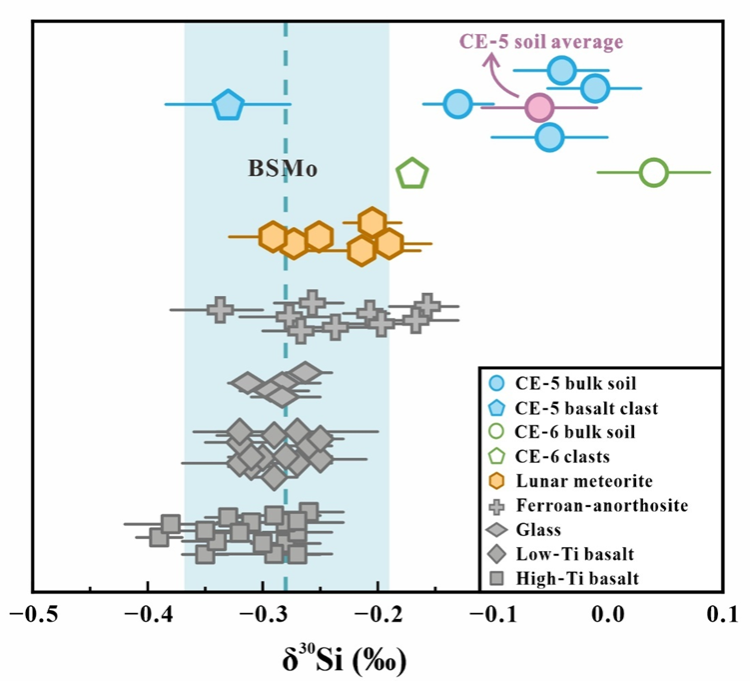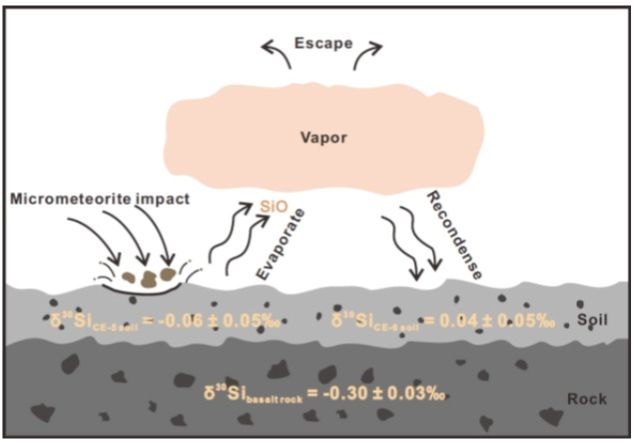Space weathering is a critical process in planetary evolution. Recently, a team led by Prof. HUANG Fang and Prof. QIN Liping of the University of Science and Technology of China (USTC) revealed that the farside of the moon has stronger space weathering effects than the nearside through evaluation of Chang’E 5 (CE-5) and Chang’E 6 (CE-6) returned samples. Their work was published on Nature Communications.

Landing sites of moon missions. (Image by Fa et al.)
Space weathering refers to a series of physical and chemical alterations that occur on the lunar surface due to prolonged exposure to cosmic rays, solar wind, micrometeorite impacts, and other space environmental factors. These processes significantly modify the landscape and the composition of lunar surface materials, especially the isotopic compositions of volatile surface elements. Therefore, lunar soil is the key to the knowledge of space weathering. With CE-6 bringing back the first samples from lunar farside, researchers can estimate the space weathering effect on this uncharted territory.

δ30Si value of lunar soil and clast samples. (Image by Zhang et al.)
In this study, researchers conducted high-precision silicon isotope (δ30Si) analysis on lunar soil samples returned by the Chang'e-5 and Chang'e-6 missions. They found that the average δ30Si values of lunar soil sample from CE-5 and CE-6 are -0.06±0.05‰ and 0.04±0.05‰, respectively, both surpassing that of the bulk silicate Moon (BSMo). However, δ³⁰Si of the rock clast sample from the Chang'e-5 mission is similar to that of BSMo, while the rock clast sample from Chang'e-6 has slightly heavier isotope composition.
Such difference could result from micrometeorite impact process. When high-velocity micrometeorites hit the lunar surface, they cause local melting of the surface material, leading to the volatilization of Si in the form of SiO from the lunar soil. During this process, the lighter Si isotopes preferentially enter the gas phase, resulting in the enrichment of heavier Si isotopes in the residual melt. The volatilized vapor may escape and subsequently redeposit onto the lunar surface, ultimately causing isotopic fractionation between the silicon isotopes in the surface lunar soil and the basaltic clast.

Loss of lighter Si isotopes caused by micrometeorite impact. (Image from Zhang et al.)
Furthermore, the overall higher δ30Si value of CE-6 soil sample indicates that the sampling area on the farside experienced more intense space weathering compared to the Chang'e-5 nearside sample. This difference in weathering degree may be related to factors such as longer exposure time, a higher micrometeorite impact velocity, or increased impact rate on the lunar farside
This study gave a novel tracer for the space weathering effects on lunar surface, revealing a higher degree of space weathering at CE-6 landing site on the lunar farside. The researchers expect to clarify the key mechanisms of space weathering with more petrographic evidence and isotope data.
Paper link https://doi.org/10.1038/s41467-025-59577-6
(Written by SHI Yutian, edited by ZHANG Yihang, USTC News Center)